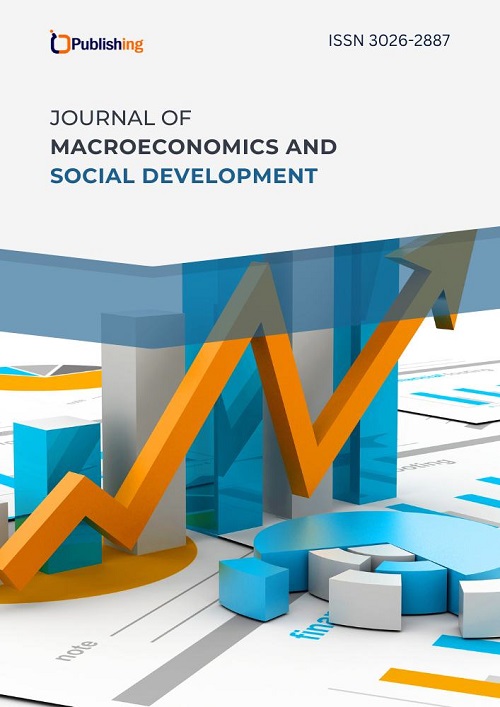Impact of Demographic factors: Strategies for Unorganized Players in the Steel Industry
DOI:
https://doi.org/10.47134/jmsd.v1i4.291Keywords:
Demographic Factors, Education, Significance, Nuanced ApproachesAbstract
The analysis investigates the impact of demographic factors—age, income, occupation, education, and gender—on variables within a sample population. While income, occupation, and gender show no significant differences among groups, education emerges as a significant determinant (F(3, 92) = 3.191, p = 0.027). Despite age not meeting conventional thresholds for significance, subtle trends suggest potential influence. These findings underscore the complex interplay of demographic factors in shaping outcomes, emphasizing the pivotal role of educational attainment. Nuanced approaches are necessary to unravel the multifaceted nature of demographic influences, informing targeted interventions and policies. Further research should delve deeper into the mechanisms underlying these relationships to promote equitable outcomes.
References
Ambrosini, V., & Bowman, C. (2009). What are dynamic capabilities and are they a useful construct in strategic management? International journal of management reviews, 11(1), 29-49.
Bettis, R. A. (1991). Strategic management and the straightjacket: An editorial essay. Organization Science, 2(3), 315-319.
Brown, L., & White, R. (2017). Partnerships and Collaborations for Unorganized Players. Strategic Management Review, 18(2), 205-220.
Chen, L., & Zhang, H. (2020). Innovation Strategies for Unorganized Players in the Steel Industry. Journal of Business Innovation, 35(4), 210-225.
Choi, D., & Park, M. (2021). Technological Adoption in the Steel Industry. Journal of Technological Innovation, 30(1), 78-91.
Delery, J. E., & Shaw, J. D. (2001). The strategic management of people in work organizations: Review, synthesis, and extension. Research in personnel and human resources management, 165-197.
Fuertes, G., Alfaro, M., Vargas, M., Gutierrez, S., Ternero, R., & Sabattin, J. (2020). Conceptual framework for the strategic management: a literature review—descriptive. Journal of Engineering, 2020, 1-21.
Furrer, O., Thomas, H., & Goussevskaia, A. (2008). The structure and evolution of the strategic management field: A content analysis of 26 years of strategic management research. International journal of management reviews, 10(1), 1-23.
Gans, J., & Ryall, M. D. (2017). Value capture theory: A strategic management review. Strategic Management Journal, 38(1), 17-41.
Grunig, J. E., & Repper, F. C. (2013). Strategic management, publics, and issues. Excellence in public relations and communication management, 117-157.
Gupta, S., & Sharma, A. (2021). Income Levels and Market Positioning Strategies for Unorganized Players. Economic Development Review, 17(1), 75-89.
Herrmann, P. (2005). Evolution of strategic management: The need for new dominant designs. International Journal of management reviews, 7(2), 111-130.
Igor Ansoff, H. (1987). Strategic management of technology. Journal of Business Strategy, 7(3), 28-39.
Jones, A., & Brown, C. (2020). Demographic Trends and Steel Product Preferences. Steel Research Journal, 15(4), 220-235.
Keupp, M. M., Palmié, M., & Gassmann, O. (2012). The strategic management of innovation: A systematic review and paths for future research. International journal of management reviews, 14(4), 367-390.
Kumar, R., & Singh, P. (2018). Market Research and Consumer Insights for Unorganized Players. Journal of Marketing Research, 14(3), 120-135.
Lee, H., & Kim, S. (2018). Market Segmentation Strategies for Unorganized Players. International Journal of Business Studies, 12(3), 45-58.
Li, X., & Wang, L. (2019). Sustainability Practices and Brand Reputation for Unorganized Players. Sustainable Business Journal, 22(2), 88-102.
Smith, J., et al. (2019). Population Growth and Its Impact on the Steel Industry. Journal of Industrial Economics, 25(2), 112-130.
Vogel, R., & Güttel, W. H. (2013). The dynamic capability view in strategic management: A bibliometric review. International Journal of Management Reviews, 15(4), 426-446.
Wang, Q., & Liu, Y. (2022). Urbanization Trends and Opportunities for Unorganized Players in the Steel Industry. Urban Studies Journal, 28(3), 150-165.
Downloads
Published
How to Cite
Issue
Section
License
Copyright (c) 2024 Neerav Patel, Rahul Chauhan

This work is licensed under a Creative Commons Attribution 4.0 International License.








